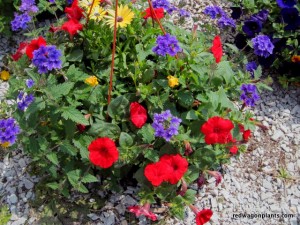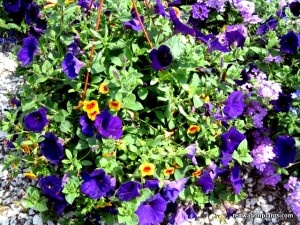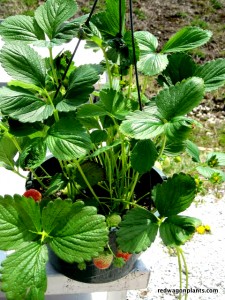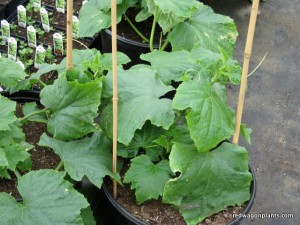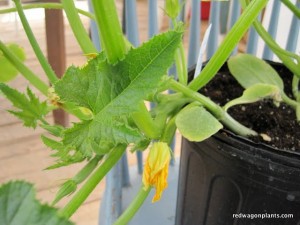We were a small but enthusiastic bunch that gathered to learn new uses for edible flowers last Saturday. Cheryl Herrick, who helps us with marketing and is a freelance writer and food blogger, took us through some of her favorite ways to use blossoms from the garden. We started by talking about safety, and making sure that any flowers you want to use for eating are non-toxic and are grown safely. She stressed that if you're feeling experimental, channel it by finding new uses for the flowers that you know are safe for consumption.
The first thing we made was a simple canape with sliced cucumbers, a small dab of creamy goat cheese, and a nasturtium flower or leaf or viola bloom on top. (If you're averse to cucumbers, sliced zucchini would be a fine substitute.)
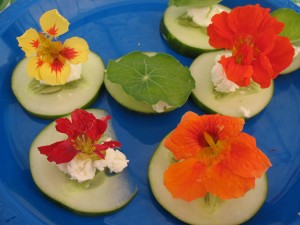
Next we talked about liqueurs. Alcohol extracts all sorts of compounds from plants, so that flowers or herbs or fruits soaked in it can sometimes have strong and surprising flavors. Because of this, it's good to keep things simple if you decide to experiment - one flower or herb at a time in either vodka or brandy or bourbon, saving simple brisk flavors (think thyme, or mint, or anise hyssop) for vodka, and stronger ones for soaking in the others. Then we put together a Nasturtium-Bourbon Liqueur - but now we have to let it sit for three months to age!

Nasturtium Liqueur Recipe 1 pint
- 1 c. bourbon
- 1/2 c. nasturtium blossoms
- 1/2 c. fruit, chopped, optional (we used a handful of blueberries)
- 1/2 c. simple syrup
Mix, cover well, let sit for 3 months.
Then it was on to Imperial Rolls, which are an uncooked spring roll made with a rice paper wrapper, and can be filled with a variety of ingredients.
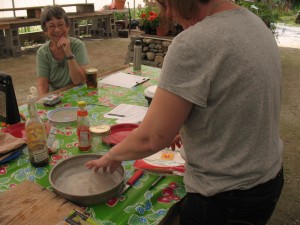
Imperial Rolls makes 8 (enough for a snack for 4)
- 8 rice paper wrappers, soaked one at a time for about 15 seconds in cold water, just before you're ready to make them
- 4 cups well-washed lettuce
- 1 cup shredded carrot
- 1 cup diced extra firm tofu
- 1 T. chopped cilantro or basil
- ~1 T. fish sauce (or substitute umeboshi vinegar or tamari)
- 8 edible flowers (we used nasturtiums, violas, and borage)
- sweet chili sauce or more fish sauce for dipping
Make by placing one soaked wrapper in front of you on a plate or cutting board. Place about 1/2 cup lettuce, some shredded carrot, basil or cilantro and cubed tofu in a line on the wrapper. Drizzle over just a little bit of fish sauce. Fold one edge over the filling, tucking the filling in so that you can roll tightly. Tuck in the other sides, and place a flower on the open part of the wrapper. Roll the wrapper, which will stick to itself, while using your fingers to compress the filling so it can be rolled fairly neatly. Cover with a damp towel until the others are done, then serve with your preferred dip.

Finally, we made some candied flowers by brushing flowers with some reconstituted powdered egg white, and sprinkling on sugar twice.

The sugar should have been superfine (which you can make at home by pulsing regular granulated sugar in your food processor for 10 seconds or so), but we tried it with what we had. They then need to sit for at least 24 hours to dry, depending on the weather.
And then we packed up our goodies and were done. It's going to be hard to wait three months for the liqueur, but we're told it'll be worth it!

Our next workshop is going to be a fantastic one on canning with no added pectin with Robin Berger on August 7. Robin is a fantastic canner and cook who worked with us this summer and blogs at hippoflambe. Give us a call to register at 802-482-4060.






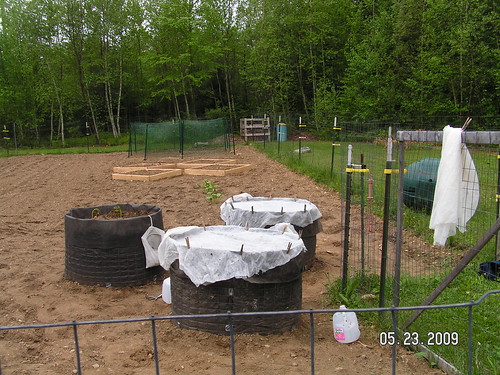
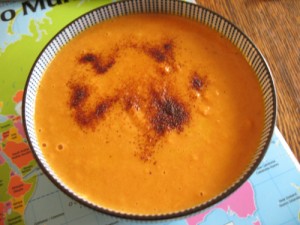 We're so excited for this weekend's sale of sweet potato plants, and want to make sure everyone has what they need to enjoy these wonderful plants.
We're so excited for this weekend's sale of sweet potato plants, and want to make sure everyone has what they need to enjoy these wonderful plants.





